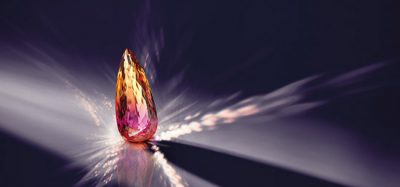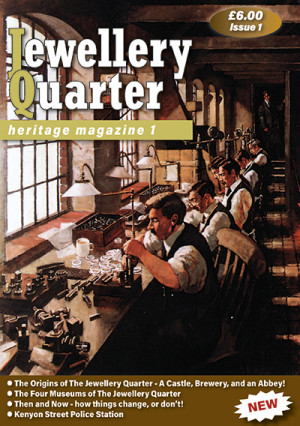Constantin Wild shows three-coloured imperial topaz
“The sparkling imperial topaz is on the way in; but only the finest stones in the most beautiful orange hues will continue to fetch top prices in the long term.” Constantin Wild says the imperial topaz is gaining ground.
For a long time, it was only loved and esteemed by connoisseurs; not until recently has a renaissance begun to show. Yet the most beautiful variety, the Brazilian imperial topaz, has become very rare.
More than two-tone: the three-coloured imperial topaz from Ouro Preto in Brazil displays all shades of red and violet, and a deep orange with a hint of gold. This stone, in a briolette cut, weighs 28.91 carats and measures 32 x 13 millimetres.
Highly polished, the facets of an imperial topaz flash with a platinum shimmer. Wild enthuses about his favourite stone: “Those fantastic reddish-gold hues and that really special sparkle are simply unique! And its hardness of 8 on the Mohs scale makes it virtually indestructible.”
Most valuable: imperial topazes in gold and pink – The topaz has been known for at least 2000 years. Nonetheless, the origin of its name is unclear: in Sanskrit, tapas means fire, whilst in Greek topazos is a legendary island in the Red Sea and topazion a light-green stone; but the Greek source probably refers to the peridot and the place where it was found, on the island of Zebirget in the Red Sea.
Gemstone as character assassin! – Topazes can be colourless, and come in shades of blue, brown and green; it is however the pink and reddish-gold hues that have always been viewed as particularly valuable. In about 1800, the stone was still highly esteemed; but then the so-called ‘gold topaz’ or ‘quartz topaz’ began to triumph.
This name, now no longer allowed, actually denoted the inferior citrine, marring the reputation of the genuine topaz. Today, so as to be distinguished from less valuable quartzes, the latter is sometimes referred to as a ‘precious topaz’. Only rare stones in those coveted red-orange-pink hues with their golden shine are entitled to bear the name of ‘imperial topaz’.
The reasons for the shortage ought to be good news: Brazil is toughening up its environmental laws, wages in South America’s largest developing nation are on the up, and the real is getting stronger.
However, this means that many mines with small deposits are no longer commercially viable – Brazilian coloured gemstones are becoming ever rarer and ever more expensive.
For further information go to www.gemstone.de




